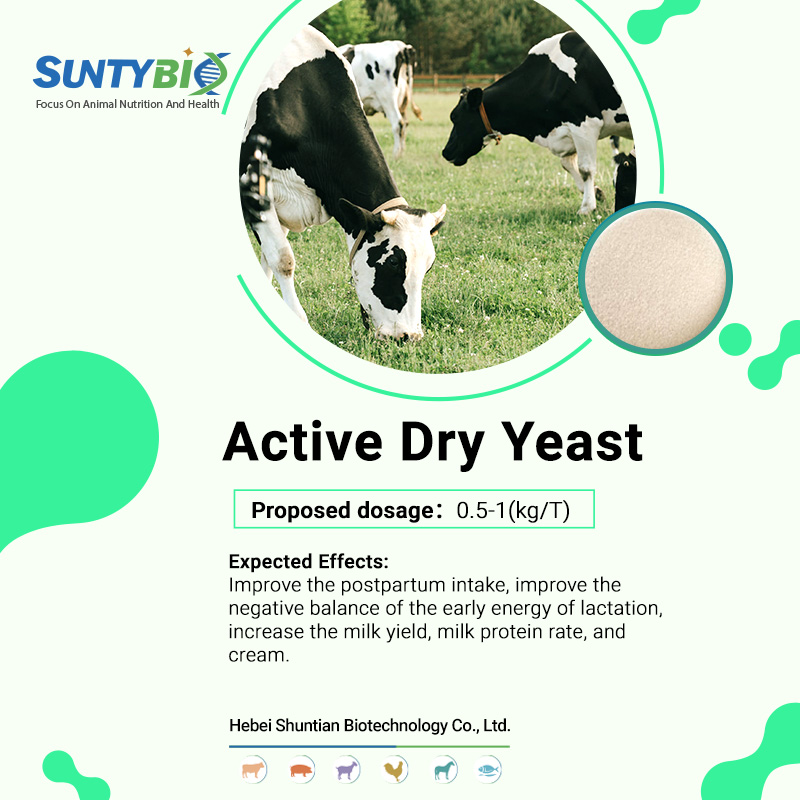Active yeast is widely used in the feed of ruminants (e.g. cattle and sheep), and its mechanism of action and efficacy are mainly related to the nutrients in yeast, its bioactive substances and its effect on the microecology of the animal's intestinal tract.
1. Improvement of feed utilisation:
Promote cellulose degradation: The yeast in active yeast can decompose and utilize the cellulose in feed, improve the degradation rate of cellulose, and increase the efficiency of fibre utilization by animals.
Enhance the production of short-chain fatty acids in feed: the metabolic process of yeast produces short-chain fatty acids, such as propionic acid and acetic acid, which help to increase the animal's utilisation of energy.
2. Promote protein synthesis and absorption:
Provide superior Quality proteins: Active yeast is rich in high quality proteins, providing ruminants with additional amino acids, which help to promote protein synthesis and absorption.
Increase microbiological proteins: The proteins produced during the growth and reproduction of yeast also provide additional microbiological proteins for animals.
3. Improves immunity:
Activation of immune cells: Components such as beta-glucan in active yeast are thought to activate immune cells in ruminants and improve the body's immune function.
Increase antioxidant substances: The antioxidant substances in yeast help to reduce oxidative stress and improve animals' resistance to diseases.
4. Promote micro-ecological balance:
Maintain normal flora: active yeast helps to maintain the micro-ecological balance of ruminant intestinal tract, inhibit the growth of harmful bacteria and promote the reproduction of beneficial bacteria.
Reduce the fluctuation of fermentation reaction: the addition of yeast helps to reduce the fluctuation of ruminants during the fermentation process and improve the stability of rumination.
5. Relieve nutritional deficiencies:
Provide vitamins and minerals: active yeast is rich in a variety of vitamins and minerals, helping to alleviate ruminants' deficiencies of these nutrients.
6. Reduce antibiotic use:
Replacing antibiotics: The use of active yeast can replace antibiotics to a certain extent and reduce the dependence on antibiotics, thus reducing the problems caused by antibiotics.
In summary, active yeast, as a feed additive, helps to improve the production performance and health of ruminants by regulating the micro-ecological balance of the animal's intestinal tract, improving feed utilisation, and promoting the synthesis and absorption of proteins in a variety of ways. When using active yeast, it is recommended to reasonably match and use it according to the specific feeding conditions and the growth stage of animals.


Phone: +86-317-2135910
E-mail: Erica@stbiol.com
Address: Machang Town,Qing County ,Cangzhou City ,Hebei,China
Hebei Shuntian biotechnology Co.,Ltd.
Add:Machang Town,Qing County ,Cangzhou City ,Hebei,China
Tel: +86-317-2135910
E-mail:Erica@stbiol.com
© Copyright - 2018-2020 : All Rights Reserved.